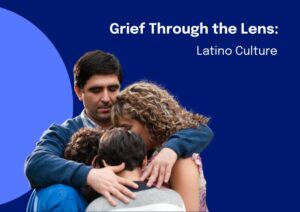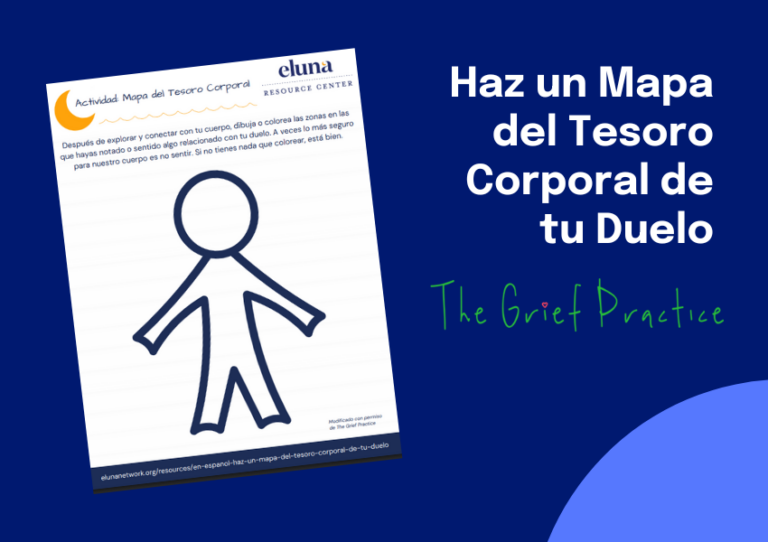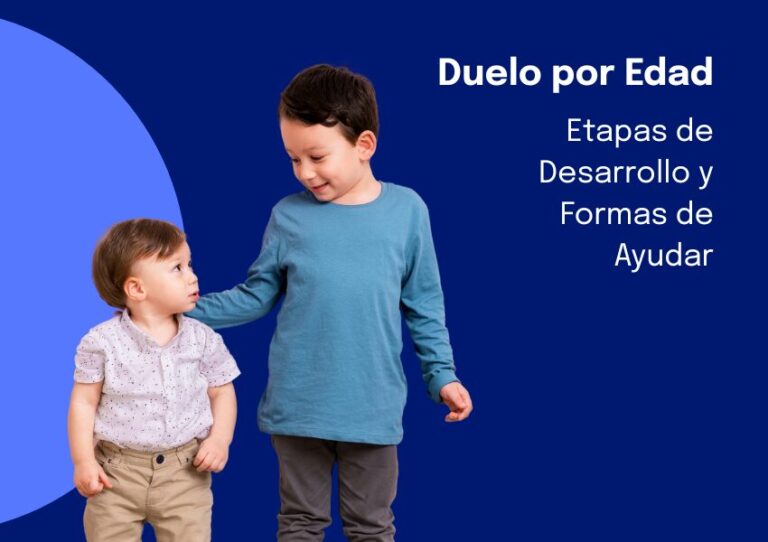Grief Through the Lens: Latino Culture
 At Eluna, our team is focused on developing critical resources to support grieving children. Along with our network of thought leaders and camp partners, we strive to expand conversations about grief with the intention to remove the stigma that surrounds death and dying so children and teens can experience more inclusive and connected support.
At Eluna, our team is focused on developing critical resources to support grieving children. Along with our network of thought leaders and camp partners, we strive to expand conversations about grief with the intention to remove the stigma that surrounds death and dying so children and teens can experience more inclusive and connected support.
The events of 2020 magnified the need to prioritize awareness of the diversity of the American experience as well as build understanding, deepen empathy, and increase respect for differences. Our Grief Through the Lens series explores the cultural diversity of grief responses and rituals. Our mission in this series is to celebrate the tapestry of experience in our communities, deepen our cultural humility in bereavement and, support all children’s bereavement.
Our first conversation explores grief withing the Latino culture with the help of the following experts:
- Aida Wells, LICSW, Seattle Children’s Hospital Journey Program
- Cindy Perez Waddle, M.Ed., LPC, RPT, Children’s Bereavement Center – Rio Grande Valley
- Cristina Chipriano, LCSW-S, Director of Equity and Community Outreach, Dougy Center
The cultures in these countries are expansive and diverse. We will highlight some Latino core values and the cultural, spiritual, and lingual nuances in the landscape of children’s grief. Finally, we will explore how bereavement is a universal experience regardless of someone’s cultural background.
A Tapestry of Traditions
When asked about common misconceptions surrounding Latino bereavement, Aida Wells, LICSW with Children’s Hospital Journey Program in Seattle, says there is a common assumption that many Latino families are Roman Catholic. She asks us to consider that there is a range of Latino experiences: “We share a common language and have similar values but different ways in which we approach them.”
Family heritage and traditions can take shape in difficult moments of mourning. Latino families and their communities may honor their loved one through food, music, candles and flowers. Some Catholic families pray the Novena for nine days after a death, create an altar at home, or hold an annual mass for their loved one. In other Latino cultures, families honor the deceased on Día de los muertos (Day of the Dead). Decorating an altar with pictures and art, preparing the favorite foods of the deceased, and taking flowers to the gravesite are some examples of the ways different cultures celebrate this day.
Children have diverse traditional backgrounds, and therefore, varying experiences of grief. It’s important to explore the uniqueness of the families’ traditions and not make assumptions about their culture.
Familismo is a Cornerstone
In the Latino community familismo is a cultural value that represents commitment, support, and loyalty within one’s family. Families unite in their joy, and they unite in their pain. “What happens in the family stays in the family,” says Cindy Perez Waddle, LPC. She explains that families want to be strong for each other and overcome challenges on their own which can create a hesitancy to reach-out for help. Therefore, it is a big step when a family member pursues formal grief support outside of their circle.
Universally, children’s grief can be overlooked because adults are focused on their own grief. When Latino families do seek grief counseling, they often do it for the sake of their loved ones. For example, a child may find support because they want to help their mother after the loss of their father. In most cases, if one person in the family receives counseling it will affect and often benefit the family as a whole. Not all Latinos have family support in the U.S., however, and there are varying levels of acculturation, so it is especially important to speak with these individuals about their backgrounds to discover how they want to be supported in the community.
Interpretations of Faith
Cindy Perez Waddle stresses the importance of collecting information about traditions, values, spiritual beliefs, and cultural backgrounds when working with a child or family coping with a loss. There can often be a discrepancy between the beliefs of a child and their parent, especially if the child is first generation American. Recent immigrants might have cultural beliefs that are more aligned to their country of origin versus a child who is more acculturated in the United States.
Cristina Chipriano, Director of Equity and Community Outreach, Dougy Center, works with first- and second-generation Latino families who are grieving. “It is important to simply ask the kids about how they are feeling about something, or how they view something, because it can be totally different than what their parents feel and believe,” she explains. She also emphasizes that religion and spirituality are not always at the core of the grief journey for Latinos. “We lean into this idea that Latinos are Catholic and what your mourning ritual should look like,” she says, “but Latinos are not a monolithic culture.”
Children’s Roles
In the wake of a family death, Latino children can be tasked with some of the more arduous and logistical duties. When a parent dies, the surviving child might be thrust into the role of the deceased parent. Young boys might be assigned or assume the provider role, or “man of the house,” when their dad dies. (Note: Machismo is another word that has historically been used to describe this cultural role, however, because of its negative connotation we decided to omit it.) When a mother dies, it is common for girls to take on the nurturing, caring, role where they are now in charge of running the home and caring for younger children: “the woman of the house,” or “the heart of the family.” Some Latino cultures may refer to this role as marianismo.
Children often also take on the role of translator for the surviving parent who may be less familiar with the English language, performing tasks like calling social security or coordinating funeral arrangements. Shifting roles and increases in responsibility add layers of complication for grieving children.
Language Differences
Language differences are one of the largest barriers for Latinos in accessing bereavement services, especially in parts of the country where there are fewer professionals who speak Spanish. Having access to bilingual services improves the quality of care for grieving families. The health disparities for Latinos grow without these resources. Universally, it is easier to share feelings and emotions in one’s native language, therefore when someone is grieving the ability to communicate their feelings in their preferred language is extremely beneficial.
Cristina Chipriano explains that even Spanish-speaking professionals can encounter language differences in their work. She tells a story about a family she works with from the Dominican Republic, where their word for “crying” is the same word for “yelling” in Central America (where she is from). When she thought something was being lost in translation she paused and asked what the word meant for them. She realized the family was talking about “crying” instead of “yelling” and she was reminded of the importance of pausing and simply asking exactly what something means for someone. “I think ultimately when working with people, whether it’s in the Latino community or people in general, it’s going in with curiosity, right? I think it’s just important….to not be afraid to ask someone, what does that mean for you? What does that look like for your family?”
Finding support for the children and families in their native tongue and providing resources in Spanish, can help. Eluna Spanish Resources
Suicide in Latino communities
Cindy Perez Waddle describes the importance of having factual and accurate information for children in an age-appropriate manner when it comes to a suicide. Children are smart and will often uncover information on their own, through the internet or a newspaper article. Being honest will affect the child’s ability to process the death in a meaningful way. She also explains that because of cultural and religious implications in Latino cultures it is common to believe that a loved one is not at rest or not able to go to heaven.
Cristina Chipriano says while Latinos aren’t monolithic “there are influences of Catholicism within the cultural values…a stigma exists because of the influence the church has on the cultural value of what happens after a suicide death.” She explains that for some Latino families after a suicide, when they finally share what happened, oftentimes blame is placed on a surviving family member.
Connected in Grief
“I think kids really enjoy learning from different [grief] practices and learning that we’re all going to do this together, we’re all connected,” Cindy says. She thinks children benefit from learning about other cultures and “find ways to connect” with a “fresh perspective.”
Peer support can be a powerful tool for children who are grieving. Grief, and the stigma surrounding death and dying, can be isolating, especially for children. Many grief support programs are built upon the transformative power of peer support where children (and adults) learn that they are not alone in their grief. Find Local Programs
How does grief support serve children and families in a positive way? Cristina says, “…in the depths of my heart, I’ve seen what grief support can do, and I know that this family that’s coming to us has experienced the most horrible thing that has ever happened to them. That there is this possibility of hope and joy and laughter again, in the future. And I have seen it. And I think that that’s why I’m able to hold out hope…”
Important tips & questions to ask grieving children
- “What were some of the values and family traits that your loved one, had? They were important; and how can that continue to live on in your family?” – Cindy“
- Encourage kids to engage, provide the space that they need, just let them be kids and meet them wherever they are.” -Aida
- “We meet people and know that they are unique, and their stories are unique.” – Cristina
A note on the term “Latin-x”: We decided not to use this term in this resource per the request of the clinicians who contributed to it….if you want to find out more about it…LINK

